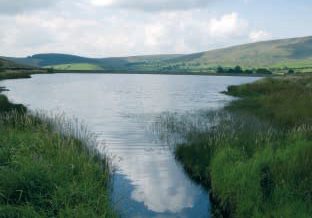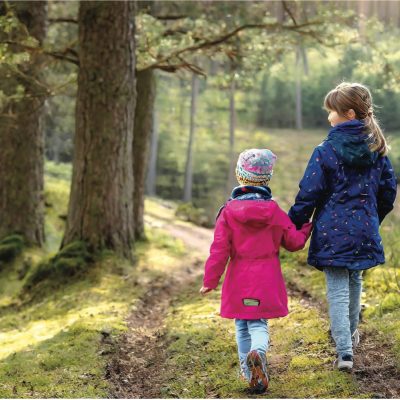
Black Moss Reservoirs Walk (3 miles)
by Colne Life magazine
Click here to download and print the walk (PDF)
General History of Barley
Barley, known as Barelegh in 1324, means the infertile lea or meadow. The Township of Barley included Barley Booth, Wheatley Booth and Hay Booth and Whitehalgh (now known as Whitehough) – “Booth” means cowsheds. About 1266 a cow farm was established, followed by extensive cattle breeding in the 13th Century. Barley earned its livelihood from agriculture until the 18th century when textiles were manufactured and hand looms were installed in attics of many small holdings as an extra source of income. Barley’s brooks – as an effective source of waterpower attracted cotton factories. There was a small mill at Narrowgates and one at Barley Green, which is now the site of the water treatment plant. At its height Barley Green Mill worked 200 looms, until floods destroyed the building in 1880. A cotton twist mill at Narrowgates was built by William Hartley to spin cotton warp thread. Weavers cottages were built adjacent to the mill and are still occupied to this day. The Whitehough area is now the Camp School established in 1938 and run by the local Education Authority.
Geological and geographical information
The rocks of Black Moss and Stang Top area to the east of Barley are Pendle Grit – a grit stone of the upper carboniferous type – which also caps the summit of Barley Hill and forms nearly all Stang Top Moor. The large group of grits and interbedded shales is about 430m (1,400ft) thick. The lower part is probably mainly massive grits, with some shales, although the upper part is mainly shaley. Black Moss Reservoirs, Black Moss Water, Over Houses and Foot House Gate all lie in shales. Near Whitehough, about a mile east of Barley, the sandstone of Pendle Grit is separated from the overlying Warley Wise Grit by a hollow, indicating shaley beds about 92 metres thick. The uppermost beds of Warley Wise Grit are well exposed in Whitehough quarry.
Black Moss bird life
The Black Moss reservoir complex attracts a variety of birds, throughout the year. During the winter a number of wildfowl species can be seen, including the humble mallard, but also a number of diving ducks, principally tufted duck but also goldeneye, goosander and, occasionally, pochard and teal. During the summer the numbers of ducks declines markedly, with only mallard remaining to breed. However, this is more than compensated for by the presence of breeding wading birds such as lapwing, curlew and redshank. These birds can be found breeding on surrounding fields and along the edge of the reservoir. Other birds to look out for around the reservoir are linnet, stonechat, skylark, common sandpiper and reed bunting. These are scarcer but with a little luck and patience can be located.
Forest of Bowland
Area of Outstanding Natural Beauty (AONB)
The Forest of Bowland Area of Outstanding Natural Beauty (AONB) is a nationally protected landscape and internationally important or its heather moorland, blanket bog and rare birds. The AONB is managed by a partnership of landowners, farmers, voluntary organisations, local councils and government agencies, who work to protect, conserve and enhance the natural and cultural heritage of this special area. For more information regarding the Forest of Bowland AONB, visit the website at www.forestofbowland.com or telephone 01772 531473 for an information leaflet.
Leaflets available from Barley Information Centre and Pendle Heritage Centre, Barrowford. P
Public transport details telephone Travel Line 0870 608 2608
Much of the land around Ogden and Black Moss forms part of a valuable water catchment area. The reservoir supplies drinking water and it is important to safeguard this supply. You can help by guarding against risk of fire, fastening gates, keeping dogs under proper control, keeping to paths across farmland and avoiding damaging fences, hedges and walls. Be careful on country roads and please protect wild life, plants and trees. When walking and riding in the countryside please follow the country code.




